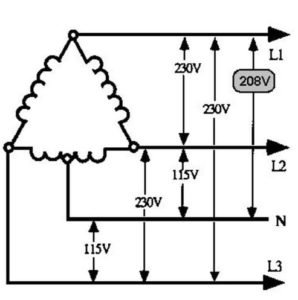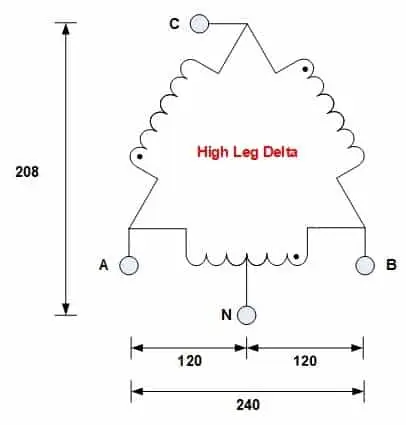Power is transmitted over long distances at high voltage. In order to supply domestic and residential applications, it needs to be stepped down to 120V or 230V single phase. This conversion happens inside a transformer. If the secondary of this transformer is delta then, the centre of any one of the phases is centre-tapped and grounded. This allows 120V single phase for single-phase loads and 240V three-phase for three-phase loads, both served by a single transformer.

What is a high leg delta connection?
A high leg delta connection is a configuration in which one of the windings in a delta connected secondary of a transformer is centre-tapped and grounded. It is also known as red leg connection or wild leg connection or orange leg connection. By doing so, we are creating a split phase supply as well as a three-phase delta connected supply.
This type of configuration is commonly used in North America, especially in the United States. By using a high leg delta connection, we can get two 120V supplies, three 240V supply and a 208V supply. The phase with 208V supply to the ground is called High-Leg or Orange leg. This conductor needs to be marked permanently by orange outer finish where ever connection is made.
A substitute for high leg delta is WYE or star-connected secondary with the centre point grounded. This connection can also provide three-phase as well as single-phase connections.
Voltage calculations

The voltage between the phases,
VAB =VBC = VCA
The phase to neutral voltage can be calculated using the following formula:
VAN = VAB / 2
VBN = VAB / 2
VCN = 1.743 * VAN = 1.743 * VBN
If the VAB is 240V, then
VAN = 240/ 2 = 120V
VBN = 240/ 2 = 120V
VCN = 1.743 x 240 = 208V
The 208V connection is typically not used.
VCN = 1.743 x 240 = 208V this has a typo. Should be VCN = 1.73 x 120 = 208V